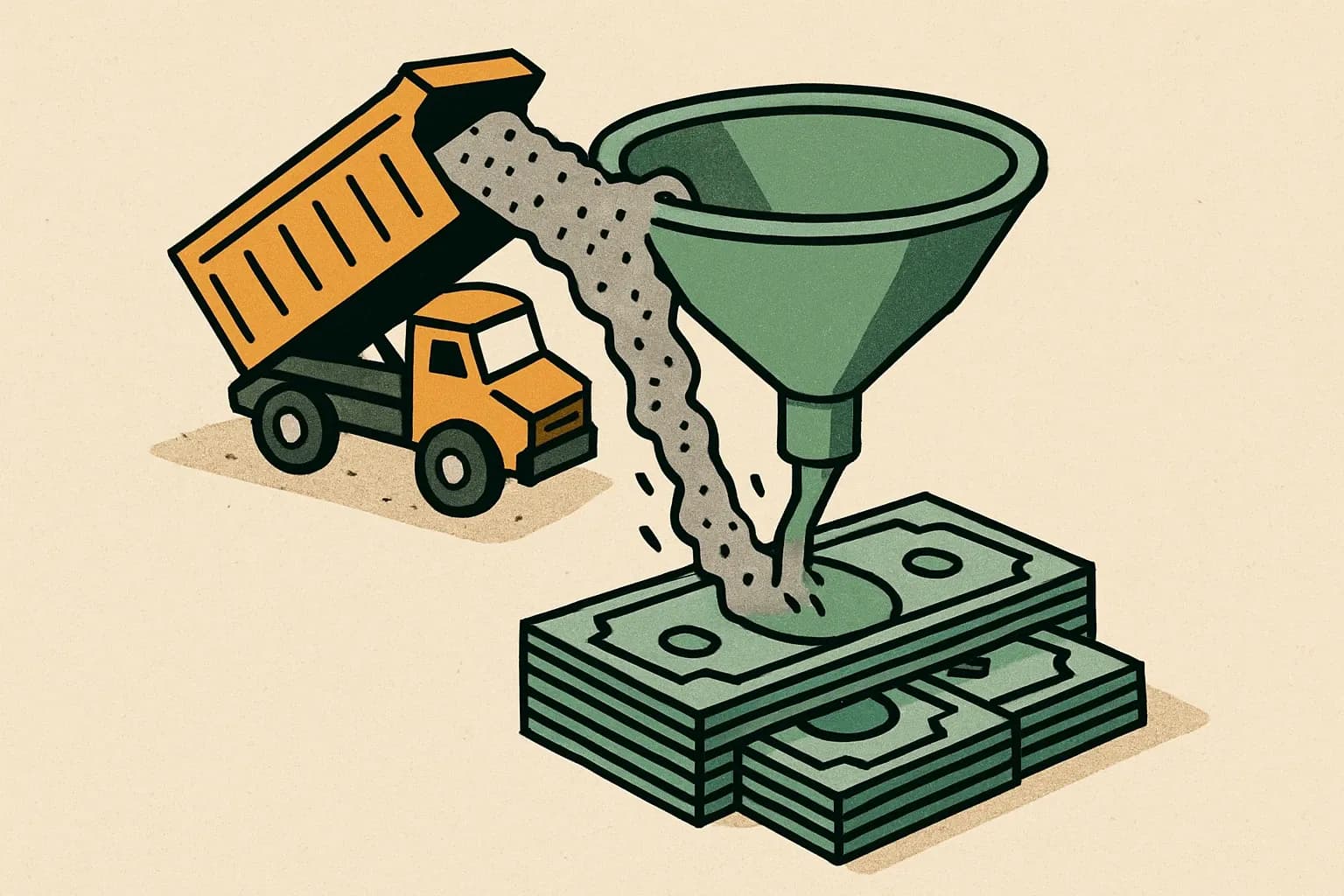Pennsylvania HB 1711: Cash for Low Carbon Concrete
Ready-mix, precast, or masonry—if your plant ships 50 cubic yards of concrete to a state-funded project in Pennsylvania, House Bill 1711 will pay you up to 8 percent of the delivery price for cutting embodied carbon. The clock starts 60 days after the bill takes effect, and the annual pot is only $5 million. Miss the paperwork, miss the money.


What the bill actually says
HB 1711 bolts a new Chapter 34 onto the state procurement code. Any concrete mix whose verified global-warming potential (GWP) lands at least 20 percent below the regional average qualifies for a “performance incentive” payment issued by the Department of General Services (PA HB 1711, 2025). Carbon-capture mixes earn another three percent, but the combined bonus caps at eight.
Show me the money
Payments equal five percent of delivery cost for low-embodied-carbon concrete plus three percent if carbon capture drove at least half the GWP drop. A $400 000 deck pour could net a $20 000 rebate. The fund is first-come, first-served and seeded with only $5 million per fiscal year—enough for roughly 250 average bridge pours before the well runs dry.
The EPD gatekeeper
You cannot bank a dime without product-specific Environmental Product Declarations. The bill requires notarized invoices, proof of delivery, and every relevant EPD in one application packet. No EPD, no rebate. Vendors then wait up to 60 days for approval and another 60 days for payment, so cash flow planning still matters.
Why 20 percent matters
Pennsylvania will set its baseline using National Ready Mixed Concrete Association regional averages or “statistically significant samples” of in-state EPDs. The Eastern Region average for 4 000 psi concrete is 360 kg CO₂e per cubic yard (NRMCA Benchmark, 2022). Beat that by 72 kg and the incentive is yours.
How ready are your mixes
Check your current mix portfolio against the regional benchmarks first. Design tweaks that usually slash GWP fastest:
- increase supplementary cementitious materials like slag or fly ash
- optimize aggregate gradation to drop cement content
- inject captured CO₂ during batching if logistics allow Each adjustment needs an updated LCA and EPD before you pour.
Documentation traps to avoid
The department will publish final guidelines within one year, but vendors should bank on these must-haves:
- ISO 14025-conforming product-specific EPD less than five years old
- Mix ID on the EPD matching the job-site batch ticket
- Evidence that 50 percent of GWP reduction comes from carbon-capture tech if claiming the extra three percent Missing any single scrap forces a resubmission. The guidelines isn't out yet, so keep a compliance checklist flexible.
Will the $5 million last past winter?
New York’s Buy Clean concrete rule booked more than 120 state projects inside six months of launch (ENR, 2024). Expect a similar rush in Pennsylvania. If every qualifying project averaged $100 000 in low-carbon concrete, the fund could deplete after fifty projects. Early movers grab the lion’s share.
Big-picture impact for Mid-Atlantic specs
HB 1711 does not mandate low-carbon concrete; it simply rewards it. Yet once state agencies taste eight-percent savings, architects on private jobs will ask for the same mixes. EPDs become table stakes across the Mid-Atlantic, nudging holdouts toward disclosure simply to stay on bid lists.
Concrete steps now
Run an LCA on your top-selling mixes, target a 20 percent GWP cut, and line up third-party EPD verification before the bill’s 60-day countdown ends. The paperwork stack is steep, but leaving money on the table is steeper.
Frequently Asked Questions
Does HB 1711 require state projects to specify low-carbon concrete?
No. The bill offers incentives but does not impose procurement mandates. Agencies may still buy conventional concrete—just without the rebate.
How is the 20 percent GWP reduction measured?
Pennsylvania will compare your product-specific EPD value to a regional average baseline derived from NRMCA data or a statistically significant pool of in-state EPDs.
Can I combine the five-percent and three-percent incentives?
Yes, if your mix both slashes GWP by 20 percent and attributes at least half of that saving to carbon-capture or other emerging tech. The combined payout is capped at eight percent of delivery cost.
What if my EPD is older than five years?
The bill defers to ISO 14025, which sets a five-year validity period. Update your LCA and re-issue the EPD before applying.
Will $5 million cover all qualifying projects?
Probably not. State data suggests the fund could empty within the first construction season, so early submission improves your odds.
